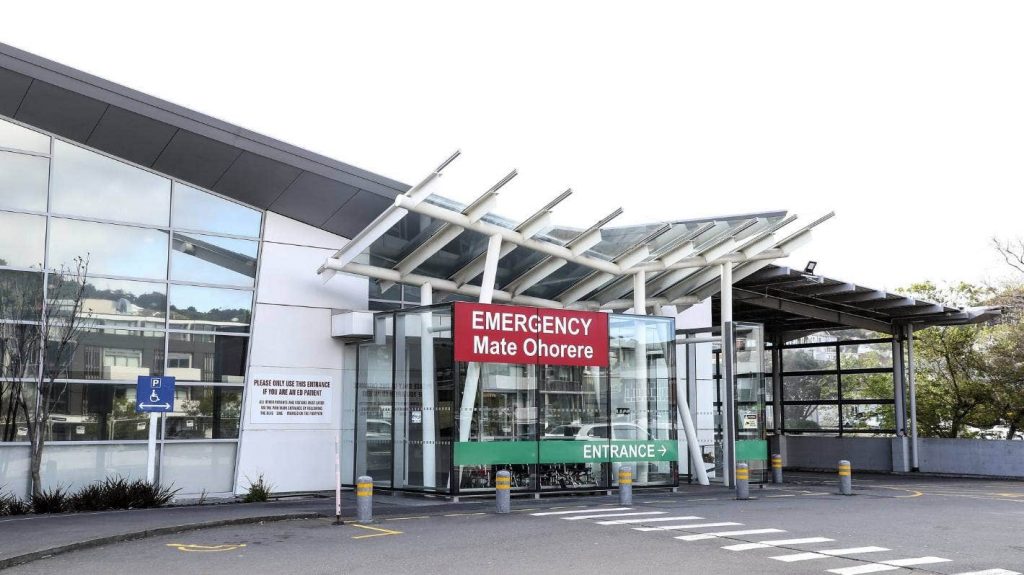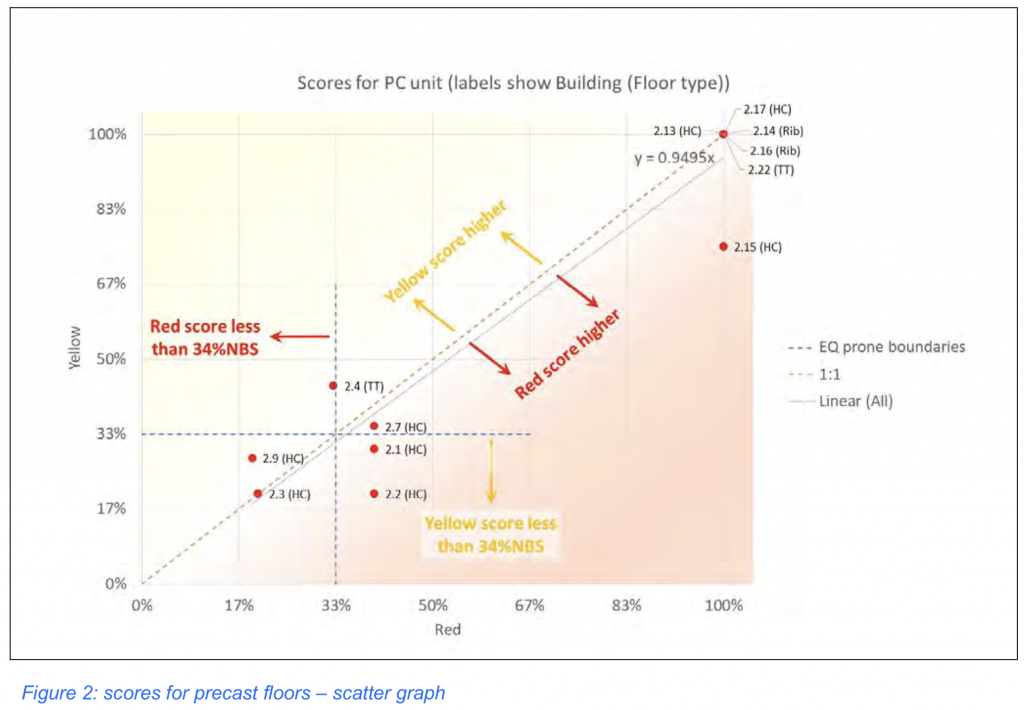Engineers – it’s time to stand up and be counted. I’m not sure if you lot in the Engineering crowd have noticed lately, but Aotearoa is getting mighty tired of you and your antics. Engineering NZ needs to be present in the room and take some responsibility for what a horrible unholy mess you have got this country in. Yes YOU, you know who I mean and what I’m talking about – and yet you’re conspicuous by your absence at present.
What am I talking about, you claim in bewilderment? What on earth is the problem, you cry in mock astonishment that anyone might have such a complaint about your fine profession?

Do you really want me to spell it out? Really? With buildings all over the country getting closed down at a moment’s notice, despite standing up fine for years and being weathering many earthquakes with narry an issue? In the last month alone, we have seen multiple hospital buildings around the country issue notices that they will have to be shut down; with office buildings in every city abruptly shut at zero notice for spurious reasons; for buildings that were just completed within the last last decade or two now claimed to be earthquake prone; for even buildings holding Government Departments and MPs now being declared off limits; with large swathes of the city (in Wellington and elsewhere) shut down and dead and dying – where, in all of this, is the fine newly minted organisation that is Engineering NZ? Absent, inaudible, and doing a crap job of placating the mass of New Zealanders who are left wondering “What the hell is going on?”.

As an architect with half a brain, I am reasonably clued up on what the issues are, but NZ puts its trust in you Engineers, to an extraordinary degree. Your word is, literally, the very Gospel, and no-one can argue against you. You have, in the past, inspired admiration in the hearts of many, with your inherent cleverness and concern for the safety of the multitudes. You are, literally, a modern-day Jesus who walks on water – well, maybe walks on liquefactionable ground and gives us an Almighty “thumbs up” or a disheartening “thumbs down”.

But this has gone on too long and your actions have gone too far and your people are crying out loudly, saying “What the fuck is going on here?” and other comments too much ruder to print. And yet the Engineers of Aotearoa stay mum – not a murmur of explanation or of placation. Time for this to end, people!

If I may be so rude as to point out the bleeding obvious, its the Yellow Chapter of the Red Book wot dunnit ! And Engineering NZ needs to be on the front foot, talking to NZ about what this means and how to cope with it. To explain it, I’ll just use the words from their own website:
“The Seismic Assessment of Existing Buildings (2017), or ‘Red Book’, is a mandatory set of technical guidelines for seismic assessments. One section, C5, deals with the assessment of concrete buildings. In 2018, C5 was revised to include the latest knowledge following the 2016 Kaikōura Earthquake. Engineers can now use this revision, known as the ‘Yellow Chapter’, for all assessments – except when determining whether a building is earthquake-prone, whereby the Red Book must be used. A %NBS (New Building Standard) rating indicates how well a building protects life when compared with a hypothetical similar new building on that same site and which complies with the minimum requirements of the Building Code. An earthquake-prone building has a rating of 34% NBS or less and has been deemed ‘earthquake-prone’ by the relevant local authority.”
There, does that all make sense now? No? I thought not. Doesn’t really explain to me how a building – such as the Meridian building, completed about 15 years ago, is suddenly now considered so devoid of earthquake resistance that it has to be closed and everyone sent home. Really? One minute it is cutting edge, a mere decade later it’s a basket case? I just don’t believe that. Or the IRD building, Asteron House, opposite the Railway Station – is that open again yet, or is it still a packing-case of whispering spiders and rattling stairwells? Closed for the rest of the year, we hear, with 1000 tax staff working from home. Yes, all your precious private tax return data, being processed from the spare bedroom in Kilbirnie – is that really what NZ should be doing?

Or Hawkes Bay Hospital being unable to install new MRI equipment – or even Wellington’s own ER clinic – to be frank, this is a complete shit-show of disaster proportions, and we haven’t even had the disaster yet!!
How about a nice picture from the MBIE report explaining it all? Will this help?

Hmmmm…. I’m not 100% sure that that helped either. Ministers have been warned, but nothing has been done. It is now time for someone from MBIE or from EngineeringNZ to stand up and reassure the public that we are not all going to die, that the world is not about to end, that the building they are in is not going to fall down, that the Red Book and the Yellow chapter are not just a scene from Alice in Wonderland, and most of all: “That they have a Plan, and this is how it is going to work.” How about it, Engineers? Time to show some mettle, to stand up and make some public statements and some useful reassuring sounds, and tell us what the hell is going on!!! PLEASE !!!





Also being discussed over on the Scoop pages:
https://wellington.scoop.co.nz/?p=144736
If you don’t like the effect the Yellow Chapter has had, you probably shouldn’t look at the new National Seismic Hazard Model.
It is currently being updated by our friends at GNS/EQC/MBIE and should be out by August. However, the interim results are already out and being considered on high importance infrastructure projects.
Basically, based on the latest understanding of the risk from the Hikurangi Subduction Zone and other faults, earthquake loads are increasing significantly for Wellington and the East coast of the North Island.
For Wellington/Gizzy peak ground accelerations appear to be increasing around 35% from current values…
After the tragic disappearance of Statistics House and the BNZ building from the Wellington skyline, while the Railway Station and the Waterloo Hotel continue to grace that same skyline, is it possible that the public at large have a jaundiced view of what the architects, engineers, and builders do and can do?
And that no matter what they said, nobody would pay the engineers a blind bit of notice?
I’m sure you’re right in many ways Mr Filth, but while the public may have a highly jaundiced view of architects and engineers, us architects are only allowed to have maximum respect for Engineers, as their word is God. It’s very hard to disagree with God and come out smiling on the other side.
The feeling is mutual at times, nemo.
The “respect” our professions have for each other is a tale as old as time. :D
Alongside Engineering NZ, perhaps line up Association of Consulting Engineers NZ (ACE NZ) and SESOC (Structural Eng Society?) … while their branding isn’t so flash, they may be a more direct voice into built environment engineering matters …
As far as I know, and I freely admit I don’t know enough, SESOC is a subset of EngNZ (eg all members of SESOC are likely to be registered members of EngNZ), and I think that ACE NZ is seen as a lesser organisation. I don’t quite understand how that all works.
Well, what’s happening now is exactly what I thought might happen – and what EngNZ should be fast acting to provide counter information. The Dom Post has a headline today:
https://www.stuff.co.nz/dominion-post/news/wellington/128773629/up-to-150-wellington-buildings-may-share-construction-flaw-deemed-quake-risk
“Up to 150 Wellington buildings may share construction flaw deemed quake risk” which is only going to spread fear and loathing and mistrust in the (uneducated) public’s eye. Such quotes as:
“Structural engineer John Scarry said the main issue for Mātauranga House, built in 1989, was the use of precast hollow core concrete floors – a common construction method in the 1980s – which could “catastrophically fail” in the event of a significant earthquake.”
And we have the first glimmer of recognition of a problem from EngNZ, with “Engineering New Zealand chief executive Dr Richard Templer said a revised NBS rating did not necessarily mean a building was unsafe, and a rating of less than 34% did not necessarily mean a building was “earthquake-prone”.”
Now, you see, that’s tricky, because the NZ Government has passed legislation that says precisely the opposite – that if your building was less than 34%, then it was indeed Earthquake Prone, and needs to be vacated and the building either strengthened or demolished. Dr Richard Templer, this is a crazy situation and you and your organisation need to SORT THIS SHIT OUT !!! When? NOW !!!!
Ahh yes, Mr Scarry. I am starting to get the feeling that this man particularly likes the sound of his own voice. Only a month ago he created quite a hoopla by trying to present his ‘opinions’ on climate change being a fallacy at the SESOC annual conference.
His presentation was rejected as it wasn’t the correct forum to discuss such matters, yet he kicked up a stink forcing a special meeting to discuss whether he should be able to talk about whatever he wants at a structural engineering conference…
I agree fully that Engineering NZ should have more of a backbone and be proactively consulting the public on what is happening. We pay them enough fees to be at least doing something to work with the public and the rest of the industry.
The earthquake prone legislation was a blunt tool, nominally using 34%NBS to help figure out the highest risk buildings at the time and I would say it served a good purpose. However, I don’t think we should be using it in perpetuity with new code updates and latest technical findings as it’s a continually moving goal post.
The simplity of stating a % NBS is very attractive to clients though, so I’m not really sure how to move people away from it.
Tui, as I understand the situation, Scarry wanted to have his article about climate change published in the SESOC journal. And his complaint was that the editors wouldn’t publish it. That was the substance of the recent special meeting. I’m not aware of his wanting to do a presentation at the Conference.
In fact, Scarry has raised legitimate concerns about emerging requirements that low-emission materials be used in new buildings. The driver of this requirement is climate change, and the implications are significant, both for engineers and architects.
Discussion in both the meeting and the accompanying conversation thread indicated that the article was slanted towards climate change, which was why it wasn’t accepted for publication.
However. It’s indisputable that climate change issues are of moment to engineers (and architects). On that score, his article ought to have been published. He may well have a dissenting view: it’s within the editors’ power to publish articles challenging his opinions. Censorship wasn’t the most useful way of dealing with this issue.
Here’s a thought for you all to consider, that the reason buildings may be getting a PING from the earthquake engineers, is not just because of the building, but also because of the soil condition. I read somewhere that the difference with the Yellow compared to the Red, is that the Yellow also looks at the soil, eg the ground beneath the building.
If true, then that may explain away reasons for the Hutt Hospital to be suddenly found wanting, as the ground in the Hutt is highly likely to be shingle and layers of mud, compared to solid rock as the engineers would prefer. The shingly ground is almost certainly not going to be up to the requirements of modern standards, where before building the hospital we would probably do a lot more work to the ground (like compacting, piles, grout injecting et) before building even starts. Its especially hard to do that when there is a building sitting on top.
And just like that, the clouds parted and a beam of sunshine burst forth, and a voice from above said:
“Fear not, for we have been doing a bit of testing in the Lab and we think we have a solution”
https://www.stuff.co.nz/science/128797691/new-fix-for-flooring-flaw-creating-quake-risk-in-wellington-buildings
“Nicholas Brooke is the coordinator of the ReCast Project, which has spent the past four years testing and verifying retrofit solutions to strengthen buildings with precast floors – a popular construction technique in New Zealand since the mid-1980s. They now cover about 1.5 square kilometres of buildings floors around the country.”
“We focused on the least complex and most affordable retrofit solutions, tested them, verified them and developed design guidance for the different technologies,” Brooke said.
Last time I installed Diecore we stoved in the first 1200 on each end so that the concrete flowed into the hollow cores, that was 2018
Is there anything on what Brooke’s actual fix is?
Only this so far
https://www.eqc.govt.nz/news/unique-collaboration-creates-solutions-for-distinct-kiwi-construction-threat/
More coming out in a SESOC report this week.
Looks like using steel angles for a safety factor on hollowware seating – which the industry has been busy doing for the past 7 years anyway ! There must be more to it than that.
If it’s just angles then from what I’ve heard, the cracks just propagate further out beyond the reach of the support angle steel? Will watch and learn..
It’s the hollow core concrete slabs deforming and falling down and squashing people that’s wot dunnit.
The structure of the building would be fine. But dozens will be dead from being squashed.
Turns out that was a bad design choice by… architects?
I’m happy for those buildings to be closed. I’d rather not be squashed in my working day if at all possible.
…..design choice of structural flooring system usually by engineer, not architect. But Senor Chico, I think part of the story is that no-one has been squashed yet. No people have been killed (in Wellington at least). The Stats building had a different flooring system, not hollow core floor at all. Christchurch buildings were different again, I think